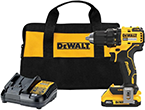A collection of individual silicon cells that generate electricity from sunlight, solar panels are comprised of those individual cells housed within a frame. The cells are wired together and connected electrically, framed by metal, and backed with either plastic, metal, or fiberglass. The entire unit—or panel—is covered by glass to protect it from the elements. Solar panels are pre-manufactured in many sizes, and can be mounted on a rooftop, on the side of a structure, or as a stand-alone unit.
There are basically three types of solar panels:
There are also three types of panel arrays to choose from; fixed, adjustable, or tracking. Tracking panels follow the sun's path continuously. Fixed panels are completely stationary, while adjustable panels are able to be adjusted a few times each year.
Typically, a 100-watt solar panel costs about five hundred dollars. You can run a microwave, refrigerator, computer, several lights, a color television, and an air conditioner using about five 100-watt solar panels. Some utility companies help defray the cost of installing solar panels and some people even "go off the grid" using solar energy—meaning, they use the public electric company only in times of emergency.

Cordless, Compact, and Powerful! DeWalt's 20-volt drill-driver kit packs a big punch in a small package, with a powerful high-performance motor tucked away inside a compact design. A great addition to the tool chest of any professional or DIYer! Check out DeWalt 20-Volt Drill/Driver Kit today!
If you have ever been nervous to replace a bad circuit breaker, have no fear. This is one of the easier electrical jobs ...
Discover MoreSafety is always an important issue to homeowners, and there is almost always something that can be done to improve it ...
Discover MoreIf you've been contemplating accenting your yard with lighting, you may want to consider using solar lighting. Easy to ...
Discover MoreThere are currently no comments for this tip. (Be the first to leave your comment—just use the simple form above!)
Copyright © 2025 Sharon Parq Associates, Inc.
Comments